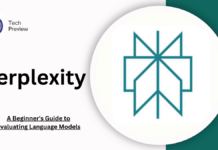Introduction to AI tools in content writing
In recent years, the content writing industry has witnessed a significant transformation with the introduction of Artificial Intelligence (AI) tools. These innovative tools are revolutionizing the way content is created, offering numerous advantages over traditional methods. AI tools use advanced algorithms and machine learning to generate high-quality content, making the writing process more efficient and effective. This article explores the impact of AI tools on the content writing industry and discusses the advantages, challenges, and limitations associated with their use.
AI tools in content writing have gained popularity due to their ability to automate the process of generating written content. These tools use natural language processing algorithms to understand the context and requirements of a given writing task. They can then produce content that matches the desired tone, style, and structure. This level of automation saves content writers considerable time and effort, allowing them to focus on more creative and strategic aspects of their work.
Advantages of using AI tools in content writing
The use of AI tools in content writing provides several advantages that are reshaping the industry. Firstly, these tools enhance productivity by speeding up the content creation process. AI algorithms can analyze vast amounts of data, extract relevant information, and generate coherent and relevant content in a matter of seconds. This eliminates the need for writers to conduct extensive research, as the AI tools can provide them with the necessary information.
Secondly, AI tools ensure consistency in writing style and quality. Human writers may inadvertently introduce inconsistencies in their work, such as variations in tone or grammar. However, AI tools adhere to predefined guidelines and can maintain a consistent writing style throughout the content. This consistency enhances the overall user experience and strengthens brand identity.
Furthermore, top AI tools enable content writers to produce a higher volume of content without compromising quality. By automating repetitive tasks, such as proofreading and editing, AI tools free up valuable time for writers to focus on more creative aspects of their work. This increased efficiency allows businesses to meet the growing demand for content in a timely manner, which can lead to higher customer engagement and increased conversions.
AI tools vs human writers: a comparison
While AI tools offer numerous advantages, it is essential to acknowledge the unique capabilities of human writers. Human writers possess the ability to think critically, exercise judgment, and infuse creativity into their work. They understand nuances in language and can adapt their writing style to suit different audiences and purposes. This human touch adds a level of authenticity and emotional connection that AI tools struggle to replicate.
Additionally, human writers possess domain expertise and can provide valuable insights that AI tools may lack. They can leverage their knowledge and experience to create content that resonates with target audiences, addressing specific pain points and providing tailored solutions. Human writers also excel in storytelling, using narrative techniques to captivate and engage readers on a deeper level.
It is important to strike a balance between AI tools and human writers in the content writing process. While AI tools can automate certain aspects, human writers should still be involved to ensure the content is infused with creativity, authenticity, and expertise.
Common AI tools used in content writing
Several AI tools have emerged in the content writing industry, each offering unique features and capabilities. One popular tool is GPT-3 (Generative Pre-trained Transformer 3), developed by OpenAI. GPT-3 can generate human-like text by predicting the next word based on the context provided. It has been widely used in various applications, including chatbots, content generation, and language translation.
Another notable AI tool is Grammarly, which focuses on improving grammar, spelling, and punctuation in written content. Grammarly uses AI algorithms to detect errors and suggests corrections, enhancing the overall quality and readability of the text. This tool has become indispensable for many content writers and has significantly reduced the time spent on proofreading and editing.
WordAI is another popular AI tool that specializes in content spinning, which involves rewriting existing content to create unique versions. WordAI employs advanced algorithms to generate readable and unique content that avoids plagiarism issues. This tool is particularly useful for content marketers who need to produce multiple versions of the same content for different platforms or audiences.
How AI tools improve content creation efficiency
AI tools have revolutionized content creation by significantly improving efficiency. These tools automate time-consuming tasks, allowing content writers to focus on more strategic aspects of their work. For example, AI tools can conduct extensive research on a given topic, extracting relevant information from a variety of sources. This saves writers hours of research time and ensures the content is accurate and up-to-date.
AI tools also aid in content organization and structure. They can generate outlines and suggest subheadings based on the topic, making it easier for writers to organize their thoughts and create a logical flow. Additionally, AI tools can provide suggestions for related keywords, helping writers optimize their content for search engines and improve its visibility.
Furthermore, AI tools enhance the editing and proofreading process. They can detect grammatical errors, spelling mistakes, and inconsistencies in tone or style, allowing writers to make necessary corrections with ease. This saves considerable time and ensures the final content is error-free and polished.
Potential challenges and limitations of AI tools in content writing
While AI tools offer numerous advantages, they also present challenges and limitations that should be considered. One of the primary challenges is the risk of generating generic or repetitive content. AI algorithms rely on patterns and existing data, which can hinder their ability to produce truly unique and creative content. There is a risk of the content becoming formulaic and lacking the authenticity and emotional connection that human writers can provide.
Another challenge is the potential for bias in AI-generated content. AI algorithms learn from existing data, which may contain biases or reflect a particular perspective. This can inadvertently result in biased content that perpetuates stereotypes or excludes diverse perspectives. It is crucial to constantly evaluate and refine the AI algorithms to ensure they produce fair and unbiased content.
Furthermore, AI tools may struggle with understanding context and nuance. They may misinterpret the intent behind certain phrases or fail to capture the subtleties of language. This can lead to inaccuracies or misunderstandings in the generated content. Human writers possess the ability to understand context and adapt their writing accordingly, which makes them invaluable in certain scenarios.
Conclusion
AI tools have undoubtedly revolutionized the content writing industry, offering numerous advantages in terms of productivity, consistency, and efficiency. These tools automate time-consuming tasks, allowing content writers to focus on more creative aspects of their work. However, it is important to recognize that human writers bring unique capabilities to the table, such as critical thinking, creativity, and domain expertise. Striking a balance between AI tools and human writers is crucial to ensure that the content is infused with authenticity, emotional connection, and expertise. By harnessing the power of AI tools and leveraging the strengths of human writers, the content writing industry can continue to evolve and thrive.









